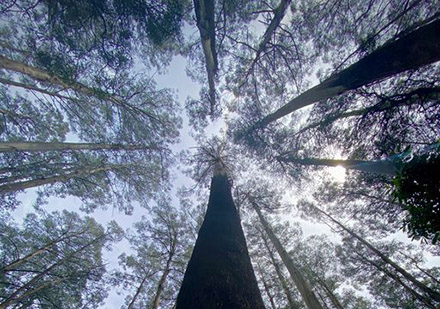Foresters like me, and probably much better than me, have been managing the productive native forests of Australia for at least 100 years.
I have been doing it for the past 57 years.
Around 25 years ago the Regional Forest Agreement process reviewed our native forests involved, or with potential to be involved, with export.
In that process if a forest had significant habitat value its tenure was converted to a conservation tenure such as national park or state conservation area and all forest production was excluded.
The innocent among us were led to believe that the rare and endangered species would now be safe from extinction with substantial areas of forest habitat protected from the ravages of forest exploitation.
If you are to believe recent media reports, we are being told that the survival of the koala, the greater glider, the yellow-bellied glider, the Leadbeater’s possum for example are all at imminent risk of extinction if proposed harvesting operations are to go ahead.
One of the planks of the NSW Labor Party at the last State Election was to convert the last of the state forests in the Coffs Harbour region to national park to save the koala from extinction.
It was just south-west of Coffs Harbour that APM bought up run down and cleared dairy farms much to the delight of the failed farmers.
APM planted those farmlands to blackbutt and flooded gum to be chipped for export from Coffs Harbour.
When the chip mill didn’t materialise, APM sold those plantations to the Forestry Commission. Those forests already had healthy populations of koalas, but they are still of the opinion that the populations in their conservation areas are threatened with extinction.
Some Victorian researchers are currently jubilant about their success breeding Leadbeater’s’ possums to save the species from extinction.
I seem to remember that little possum was thought to be extinct before the devastating fires of 1939. Subsequently, when the burnt forests regenerated it wasn’t even rated as rare.
Now that the Victorian Government has put a stop to native forest harvesting, does that mean the little possum’s future is once again in doubt?
The current concern about the impact of the next native forest harvesting operation leads me to believe that the forest management practices by the likes of me may threaten the survival of individual animals but I know they are in fact beneficial for the thriving survival of species.
Foresters have looked after our forests well for 100-plus years producing forest products while maintaining populations of rare and threatened species.
If the preservation movement is right, and the few remaining state forests are required to save the threatened species, it indicates to me that it has taken only 25 years of benign neglect in the reserves to decimate the populations that were entrusted to them in what had been regarded as best habitat.
It is unfortunate that it is so easy to show a current harvesting operation as devastating.
Back in my Kyogle days we built a new road on the Tweed Range at 3,500ft asl, and it just so happened that the only gravel deposit we found extended under a patch of Antarctic Beech.
A photo printed in the Northern Daily Leader (Lismore) gave the impression the gravel pit and the devastation was extensive. A Kyogle High teacher was moved to write to the editor to point out that less than half an acre was affected, and that the road being gravelled by-passed the Antarctic Beech.
In more recent years State Forests Corporation of NSW felt a patch of river red gum needed regenerating. They marked about two hectares “regeneration gap” to be cleared retaining habitat/seed trees after their normal harvesting had moved on.
The harvesting had yielded about 20 cubic metres of logs. The regeneration clearing, to every-one’s surprise, yielded another 56 cubic metres. This gap was right next to the 20-metre undisturbed river frontage to the Murray River.
The Murray River Highway in Victoria had a clear view for traffic heading west. Stories of the devastation found their way to the NSW Minister who was not happy until the circumstances and relative extent was explained to him, after which he completely lost interest.
In fact, it was only obvious to the passing traffic while the recently dead foliage was a stark contrast to the surrounding forest.
In closing, it just needs to be pointed out that the conservation movement is flattering foresters as the production managers for still having viable populations of threatened species after 100 years of our management while the prime habitat given to their care is struggling after only 25 years.
Vic Eddy joined the Forestry Commission of New South Wales as a forester in 1966 and worked across the state until 1984.He holds a Bachelor of Science (Forestry).








